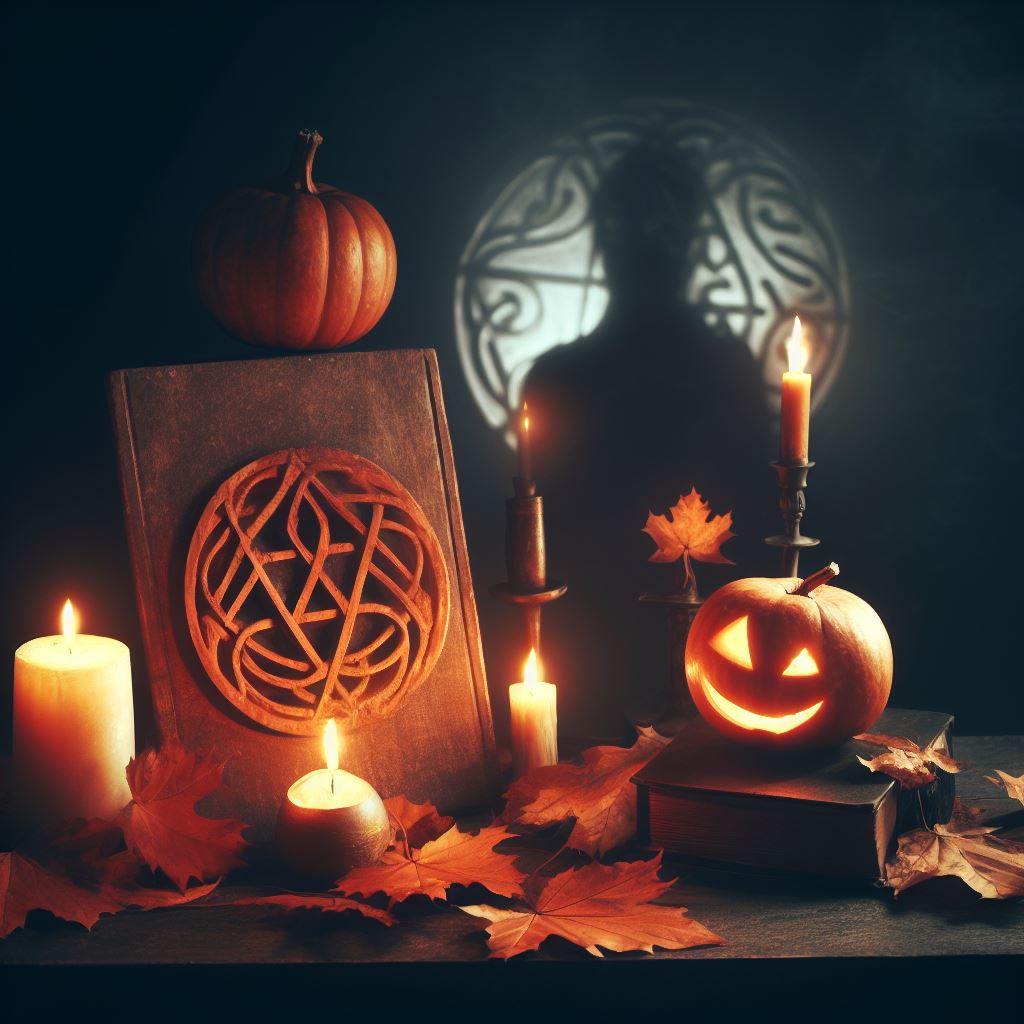The terms “hexes” or “curses” often get tossed around in movies, books, and casual conversations, but their true meanings and uses in magick are a bit more complex. Have you ever wondered if there was a real differences between a hex and a curse, and what it is?
Understanding Magickal Intentions in Hexes and Curses
Magick, at its core, is all about intentions. It’s the practice of using one’s will to bring about change, and it’s been a part of human culture for centuries. But not all magick is created equal. When it comes to hexes and curses, the intentions behind them can vary widely, and that’s where things get interesting.
Magick is deeply rooted in the practitioner’s intent. Hexes and curses are prime examples of this. They might seem similar on the surface, but they serve different purposes and carry different energies.
Hexes, for instance, are usually more about sending a temporary jolt of bad luck or inconvenience someone’s way. Think of it as a magickal slap on the wrist. Curses, on the other hand, are often much more severe, intended to bring about long-term suffering or misfortune.
Misconceptions abound when it comes to these practices. Many people believe that hexes and curses are inherently evil, but that’s not always the case. They can be used for protection, justice, or even to teach someone a lesson. It’s all about the practitioner’s intent and the specific circumstances.
What is a Hex?
A hex is essentially a spell cast with the intention of causing some form of minor harm or misfortune to the target. Historically, hexes have been used in various cultures as a way to address grievances or protect oneself from harm.
The term “hex” itself comes from the German word “hexe,” which means witch. In the Pennsylvania Dutch tradition, hexes were often used as a form of folk magick, blending elements of old-world witchcraft with new-world practices. These hexes could range from simple jinxes to more elaborate spells designed to ward off evil spirits or bring about good luck.
Hexes are typically temporary and can be reversed or countered with relative ease. They’re like the speed bumps of the magickal world—annoying, but not usually life-threatening. Common methods of casting a hex might include using symbolic objects like poppets (dolls representing the target), inscribing runes or symbols, or reciting specific incantations.
For example, one might hex someone by creating a poppet, filling it with items representing the target (like hair or nail clippings), and then performing a ritual to imbue the poppet with their intent. The hex could be something as simple as causing the target to have a string of bad luck or making them feel uneasy.
Despite their relatively “mild” nature, hexes are not to be taken lightly. The ethics of hexing can be a hot topic in the magickal community. Some practitioners believe in a “harm none” approach, while others feel that hexing is justified in certain situations, like self-defense or seeking justice.
What is a Curse?
Now, let’s talk about curses. If hexes are speed bumps, curses are more like the potholes—deep, damaging, and the effects are often long-lasting. A curse is a spell cast with the intention of bringing significant harm or misfortune to the target, often for an extended period.
The word “curse” has its roots in Old English, and the practice of cursing has been documented in many cultures throughout history. From ancient Egyptian pharaohs placing curses on their tombs to medieval witches cursing those who wronged them, curses have always carried a heavy weight.
Curses are known for their intensity and durability. They are designed to bring about serious negative consequences, such as illness, bad luck, or even death. Because of their powerful nature, curses often require more complex rituals and stronger intent than hexes. They might involve invoking deities, performing intricate ceremonies, or using potent ingredients like graveyard dirt or blood.
For instance, a curse might be placed on someone by burying a cursed object on their property or performing a ritual under a full moon to call upon dark forces. The goal is to create a lingering effect that can be difficult to remove without serious countermeasures.
Curses are often seen as a last resort, used when other methods of resolving a conflict have failed. The ethics of cursing are even more contentious than those of hexing. Many magickal practitioners avoid cursing altogether, believing that the negative energy can come back to haunt the caster, a concept known as “karma” or the “threefold law.”
Despite their dark reputation, curses, like hexes, are ultimately tools. They can be used for various purposes, not all of which are malicious. For example, some curses are designed to protect the caster or their loved ones by creating a barrier of misfortune around potential threats.
Hex vs. Curse
Now that we’ve got a handle on what hexes and curses are individually, let’s put them side by side and see how they stack up against each other.
This is where things get really interesting because the differences, while sometimes subtle, can have big implications in the magickal practice.
Intention and Outcome
The primary difference between a hex and a curse lies in their intention and outcome. Hexes are generally designed to cause temporary discomfort or misfortune. They’re like a magickal slap on the wrist—annoying and inconvenient, but not life-altering. You might hex someone to make them trip over their own feet, lose their keys, or have a bad hair day. The intention is usually more about teaching a lesson or delivering a minor punishment.
Curses, on the other hand, are much more severe. They aim to bring long-lasting harm or significant misfortune. As I mentioned earlier, cursing someone could result in chronic bad luck, serious illness, or even death. The intention behind a curse is typically much darker and more intense than that of a hex.
Duration and Permanence
Hexes are usually short-lived. They might last for a few days or weeks, but they eventually fade away, especially if the target takes steps to cleanse themselves or counteract the hex. It’s like a storm: it can cause some temporary havoc, but it will pass.
Curses, however, are designed to be much more enduring. They can last for years, generations, or even lifetimes. Some curses are believed to be so powerful that they persist even after the original caster has died. This is why curses are often considered a last resort, used only when the situation is dire, and the desired outcome is worth the potential karmic backlash.
Cultural Perceptions
Hexes and curses also differ in how they are perceived culturally. Hexing often has a more playful or mischievous connotation. In many traditions, hexes are seen as a form of low magick, used by everyday people to address everyday issues. They can be a way to handle minor disputes or protect oneself from minor annoyances.
Curses, however, are often viewed with much more fear and reverence. They are seen as powerful and dangerous tools of high magick, often associated with dark or forbidden practices. Curses are typically reserved for serious offenses or dire situations, and the cultural stigma around them can be much stronger.
Complexity and Methods
Hexes are generally simpler to cast than curses. They might involve a quick incantation, a symbolic gesture, or a small ritual. The materials needed for a hex are often easy to obtain, and the process is usually straightforward.
Curses, on the other hand, can be highly complex. They might require elaborate rituals, rare ingredients, and significant preparation. The process of casting a curse can be long and involved, sometimes taking days or weeks to complete. This complexity is part of what gives curses their power and makes them so feared.
Ethical Considerations
The ethics of hexing and cursing are hotly debated in the magickal community. Many practitioners adhere to the principle of “harm none,” avoiding any magick that could cause harm to others. Others believe that hexing and cursing are justified in certain situations.
Hexes, being relatively mild, are often viewed as more ethically acceptable. They can be seen as a way to address minor wrongs without causing serious harm. Curses, however, are much more controversial. The potential for significant harm makes them a much grayer area ethically. Practitioners who choose to curse often do so with great caution, fully aware of the potential consequences.
Ultimately, the ethics of your own practice are your own. However, if you are thinking of incorporating hexes or curses in your practice, you should be fully confident and comfortable in doing so. It’s so important to understand your practice and your type of magick before attempting either.
The Role of Protection and Countermeasures
Given the potential dangers of hexes and curses, it’s no surprise that many magickal practitioners focus on protection and countermeasures. Let’s explore some common ways to safeguard against these negative energies.
Protective Magick
Protective magick is all about creating barriers to keep harmful energies at bay. This can include anything from wearing protective amulets to casting protective circles. Common protective items include crystals like black tourmaline or amulets like the evil eye. These objects are believed to absorb or deflect negative energies, preventing them from reaching the wearer.
Countermeasures and Remedies
If you suspect you’ve been hexed or cursed, there are several steps you can take to counteract the spell. Cleansing rituals, such as smudging with sage or taking a salt bath, can help remove negative energies. In more severe cases, you might perform a ritual to break the curse, such as creating a mirror box to reflect the curse back to its sender.
Practitioners might also seek help from more experienced witches or magickal practitioners. Sometimes, a fresh perspective and a bit of extra magickal muscle can make all the difference. Remember, the key is to stay calm and focused—panic can only make things worse.

Hexes and curses are fascinating aspects of magick, each with its own unique characteristics and uses. Understanding the differences between them can help you navigate the magickal world more confidently and responsibly.
Magick, like any other practice, requires respect, understanding, and a clear sense of ethics. Remember, magick is a powerful tool, and with great power comes great responsibility. Use your knowledge wisely, and always consider the potential consequences of your actions.
















